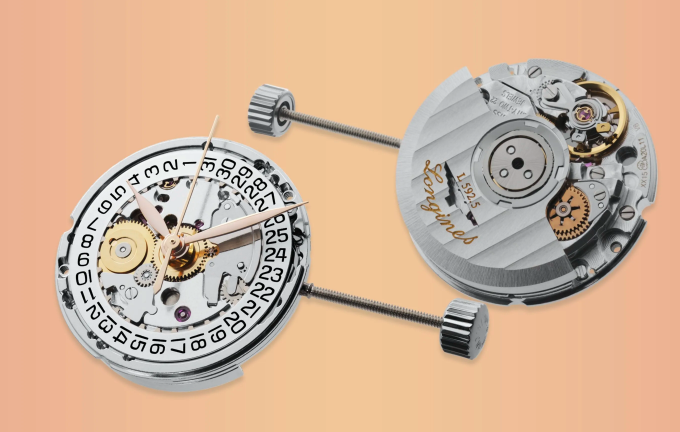
Swiss Movement Watches: A Comprehensive Guide
Swiss movement watches are renowned globally for their precision, quality, and craftsmanship. The term Swiss movement signifies more than just a timekeeping mechanism; it represents a hallmark of excellence in horology. This article will delve into the essence of Swiss movements, their historical significance, technical aspects, and why they continue to be the gold standard in the watchmaking industry.
1. Understanding Swiss Movement
Swiss movement, often referred to as “Swiss movement watches,” denotes timepieces powered by mechanisms designed and manufactured in Switzerland. Swiss watch movements are celebrated for their superior accuracy, durability, and craftsmanship, making them a highly coveted feature in the watch industry.
Key Characteristics of Swiss Movements:
- Precision: Swiss movements are known for their exceptional timekeeping accuracy, often exceeding the standards set by international regulations.
- Craftsmanship: Each movement undergoes meticulous craftsmanship, reflecting centuries of expertise and tradition in Swiss watchmaking.
- Innovation: Swiss watchmakers are renowned for their innovative approaches, continually pushing the boundaries of horological technology.
2. Historical Background
The Swiss watchmaking tradition dates back to the 16th century, with Geneva being a prominent center for horological innovation. Swiss movements emerged as a global standard through a combination of historical factors and technological advancements.
Early Beginnings:
- 16th Century: Swiss watchmaking began in Geneva, where artisans started crafting pocket watches and other timekeeping devices.
- 19th Century: The advent of industrialization brought new technologies and techniques, establishing Swiss watchmaking as a leading force in the global market.
Key Milestones:
- 1900s: Swiss watchmakers introduced innovations such as the automatic movement and quartz technology, setting new standards for accuracy and reliability.
- 1969: The introduction of the quartz movement revolutionized the industry, solidifying Switzerland’s position as a leader in horological technology.
3. Types of Swiss Movements
Swiss movements come in various types, each catering to different needs and preferences. The two main categories are mechanical movements and quartz movements.
1. Mechanical Movements:
- Manual Mechanical: These movements require the wearer to wind the watch manually to power the timekeeping mechanism. They are cherished for their traditional craftsmanship and intricate designs.
- Automatic Mechanical: Also known as self-winding movements, these harness the kinetic energy from the wearer’s wrist movement to power the watch. They offer the convenience of not needing manual winding while maintaining mechanical sophistication.
2. Quartz Movements:
- Analog Quartz: Uses a quartz crystal to regulate timekeeping, providing high accuracy with minimal maintenance. These movements are powered by a battery and are known for their reliability and precision.
- Digital Quartz: Combines quartz technology with digital displays, offering features such as date, alarm, and backlighting. These movements cater to modern preferences for functionality and convenience.
Read also: Udyam Registration for Service Sector Businesses: A Comprehensive Guide
4. The Making of Swiss Movements
The creation of Swiss movements involves a detailed and labor-intensive process, reflecting the dedication and expertise of Swiss watchmakers.
1. Design and Engineering:
- Conceptualization: Designers and engineers collaborate to create intricate movement designs, incorporating advanced technology and aesthetic elements.
- Prototyping: Prototype movements are developed and tested to ensure accuracy and reliability. This stage involves rigorous quality control and refinement.
2. Manufacturing:
- Component Production: Individual components of the movement, such as gears, springs, and escapements, are manufactured with precision using advanced machinery and traditional techniques.
- Assembly: Skilled watchmakers meticulously assemble the movement, ensuring that each part functions harmoniously. This process requires exceptional craftsmanship and attention to detail.
3. Testing and Quality Control:
- Accuracy Testing: Movements undergo extensive testing to verify their accuracy and reliability. This includes timekeeping tests in various conditions.
- Durability Testing: Movements are tested for durability, including resistance to shocks, temperature variations, and other environmental factors.
5. Why Swiss Movements Are Highly Valued
Swiss movements are highly regarded for several reasons, which contribute to their reputation as the gold standard in the watch industry.
1. Unmatched Precision:
- Accuracy: Swiss movements are renowned for their exceptional timekeeping accuracy, often exceeding the standards set by global regulatory bodies.
- Consistency: Swiss watchmakers prioritize precision in their designs, ensuring that each movement consistently performs at the highest level.
2. Exquisite Craftsmanship:
- Artisan Skills: The creation of Swiss movements involves the skill and expertise of highly trained watchmakers who take pride in their craft.
- Attention to Detail: Every aspect of Swiss movements, from component design to assembly, reflects meticulous attention to detail and quality.
3. Innovation and Technology:
- Advanced Features: Swiss movements incorporate innovative technologies, such as advanced escapements and materials, enhancing their performance and functionality.
- Continuous Improvement: Swiss watchmakers are committed to ongoing research and development, pushing the boundaries of horological technology.
4. Heritage and Tradition:
- Historical Significance: The Swiss watchmaking tradition is steeped in history, with centuries of expertise and innovation shaping the industry.
- Legacy: Swiss movements carry a legacy of excellence, representing the pinnacle of horological achievement.
6. Choosing a Swiss Movement Watch
When selecting a Swiss movement watch, several factors should be considered to ensure that you choose a timepiece that meets your preferences and needs.
1. Purpose and Functionality:
- Daily Wear: For everyday use, consider a watch with a reliable quartz movement or an automatic mechanical movement for a touch of traditional craftsmanship.
- Special Occasions: For formal events or special occasions, a luxury Swiss watch with a manual mechanical movement or a high-end quartz movement can make a statement.
2. Style and Design:
- Classic Designs: Swiss watches are available in various classic designs, including dress watches, pilot watches, and dive watches. Choose a style that complements your personal taste and lifestyle.
- Modern Features: Consider watches with modern features, such as chronographs or GMT functions, if you require additional functionalities.
3. Brand and Manufacturer:
- Reputation: Opt for reputable Swiss watch brands known for their quality and craftsmanship. Established brands often have a long history of producing exceptional Swiss movements.
- Warranty and Support: Ensure that the watch comes with a warranty and access to customer support for any maintenance or repairs.
7. Maintenance and Care
Proper maintenance is essential to keep your Swiss movement watch in optimal condition and ensure its longevity.
1. Regular Servicing:
- Service Intervals: Swiss watches should be serviced periodically, typically every 3-5 years, to maintain accuracy and performance.
- Professional Service: Seek the assistance of authorized service centers or professional watchmakers for servicing and repairs to ensure quality and authenticity.
2. Cleaning and Storage:
- Cleaning: Clean the watch regularly with a soft cloth and mild cleaning solution to remove dirt and moisture.
- Storage: Store your watch in a dry, cool place and use a watch box or case to protect it from dust and damage.
8. Conclusion
Swiss movement watches embody a legacy of precision, craftsmanship, and innovation. The combination of historical significance, advanced technology, and meticulous craftsmanship makes Swiss movements a coveted feature in the watch industry. Whether you are seeking a reliable everyday timepiece or a luxury watch with exceptional qualities, Swiss movement watches offer unparalleled performance and style.
By understanding the intricacies of Swiss movements, their types, and the factors to consider when choosing a watch, you can make an informed decision and invest in a timepiece that reflects the highest standards of horological excellence.






